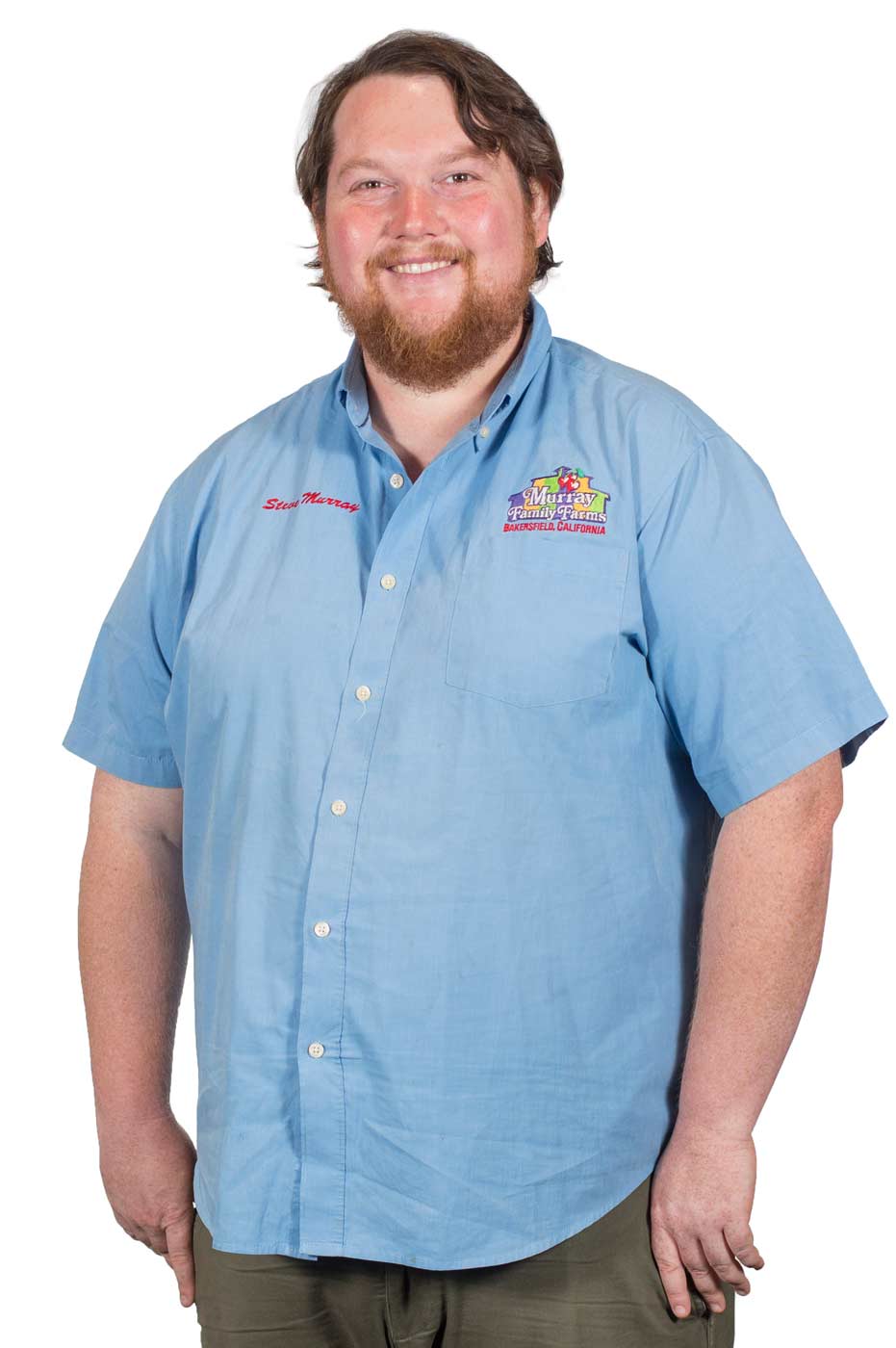family background / Steven has helped change Murray Family Farms’ business, adding farm markets and agritourism at locations in California’s Southern San Joaquin Valley. He graduated from California State Polytechnic University, Pomona, and is the son of Steve and Vickie Murray.
age / 32
crops / Cherries, diversified crops
business / Murray Family Farms
 How did you get your start?
How did you get your start?
As a baby, my parents would take me to farmers markets and I would go around trying to get rare and exotic fruits from neighbors, and that was my introduction to fruit growing — when I was about 4 years old.
Since I’ve graduated from school, I’ve really been pushing the direct-to-farm market aspect of the business. I’ve tripled the farm market sales over the past three years, where sales were relatively flat.
A lot of that new growth has been by investigating very unusual crops, then planting them to help attract people to our stand. Taking this approach, we’ve had continuous growth, and I see it growing into the future.
What is your direct sales strategy?
One of the big things when selling to a packing house, which a majority of our fruit goes to, we aren’t paid immediately. We wait until we receive payments from the packing house.
With direct farm marketing and farm markets, it’s all cash. I’m able to cash-flow the business so as soon as I have people picking commercial quantities of fruit; I can get cash into the business that same day from the markets.
We’ve been able to pay for things as the crop comes in as opposed to relying only on a harvest loan and waiting for packouts. It puts us in a much safer place.
How do you manage your farm market decisions?
One of the big things to understand is it’s a very different system. Your goal is to have the fruit available as long as possible. So instead of having one big pick, where you handle as much of the crop as possible.
I want to space the crop out to provide for as many weeks at the market and stretch it out. Each week, I’m going to want to make the same amount of income.
Planting early, mid-season and late-season varieties is part of the process. The drawback is we also have much higher labor costs then traditional farms.
What challenges come from such a southern location?
We’re growing cherries across the street from citrus. It’s one of the only farms where you’re going to see oranges and cherries side by side.
When our farm started, the county told our family that cherries couldn’t grow in Kern County. We were one of the first farms in the county to grow cherries as a commercial crop.
As far as chilling for the cherries, we get about four-fifths of what we need from climate. So we use a lot of cultural practices to increase our chilling, such as overhead cooling in the winter; we paint our trees and follow some in-house programs that help us get more chilling then other blocks in the neighborhood.
If it weren’t for all of these practices, especially in low-chill seasons, growing all of our crops may not be feasible. Last summer was one of our hottest, with 78 days above 100 degrees. Even though we have that much heat, we’ve found ways to grow cherries.
Besides climate, what other challenges are top of mind?
Labor continues to be a really tough issue and we’re fortunate to have large populations around us to pull from.
So even though our farm is in a rural area, at the intersection of two dirt roads, we still have Bakersfield with about 400,000 and Arvin with 16,000 people, so we are able to get crews in for cherry harvest. However, as time goes on I see it getting harder and harder.
What is your advice to young growers?
If you’re a new grower entering the industry, I’d recommend finding a niche in the market that you can get into.
There’s also a lot of farmers who are baby boomers and many of them are looking to retire. This is a good time to find openings in the near future than there has been before, because there isn’t a bunch of people replacing them all.
– TJ Mullinax






Leave A Comment